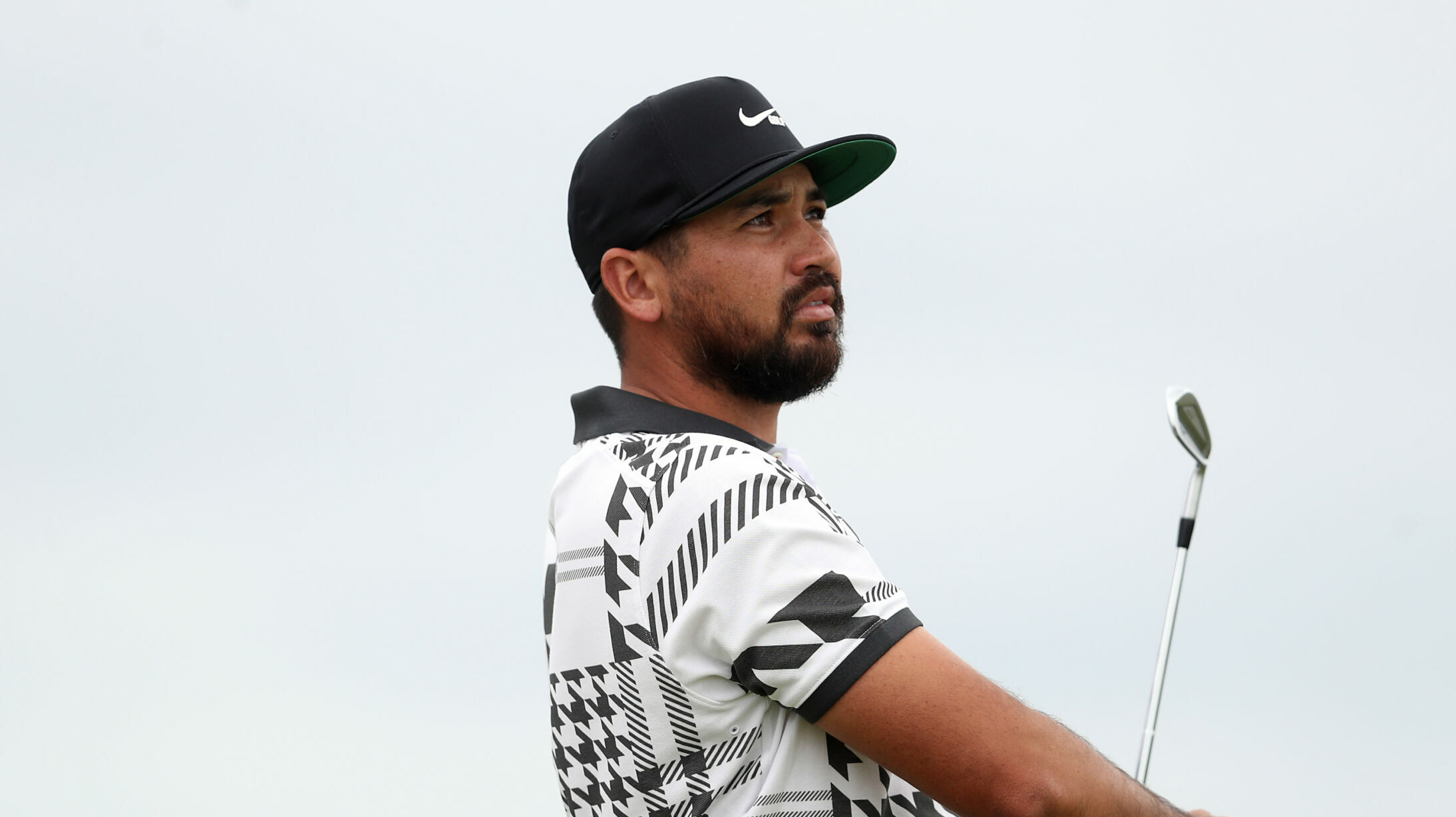The concept for a short course at Augusta National came during the initial thought process for the overall property. Writer and architect Joshua Pettit did a bit of sleuthing in 2014 and found design plans from Augusta National course architect Alister MacKenzie for "an approach and putt course" of just under 400 total yards. However, Jones nixed the idea.
MacKenzie even had plans for an extended layout of 18 holes with a yardage of 2460 yards with nine double-greens and no bunkers. The timing proved to be an obstacle as Augusta National was struggling to remain afloat during the Great Depression time frame.
Friends, family and plenty of laughs over the years at The Par 3 Contest 🙌#TheMasters pic.twitter.com/zFb7w3aiqM
— DP World Tour (@DPWorldTour) April 6, 2022
In 1958, Roberts and local architect George W Cobb created a 9-hole course located on 22 acres of land in the north east corner of the property.
The holes range from 70 to 140 yards and are played over Desoto Springs Pond and Ike's Pond (named for the former US. President and Augusta National member Dwight D Eisenhower). The total yardage for the course was 1,060.
Roberts believed the idea of having a Par 3 Contest on the Wednesday before the start of the Masters would provide a showcase for those participating in the actual tournament and honorary invitees.
The idea was not universally accepted by club members. Some even believed such an event would be nothing more than a "Tom Thumb course."
The first event took place in 1960 and the winner was three-time Masters champion Sam Snead. The West Virginian would secure his second Par 3 Contest victory aged 62 (1974).
In 1986, architect Tom Fazio created two new holes – the present 8th and 9th – playing directly over Ike's Pond. The current course took old holes – the 3rd through the 9th – and renumbered them as one thru seven.
Cobb's original first two holes now serve as prime seating areas during the event. As actual holes –they're still present – but now occupy a diminished role.
The winner of the event receives a crystal bowl to commemorate the success.
The event also provides for the intersection of players and family members. A number of competitors have had their children, and some with grandchildren, serving as caddies for the event.
A number of players also use the event to showcase a range of skills. One seen each year is players skipping a ball off a frontal pond and landing the ball on the respective green being played.
The stature of the event has been helped in recent years because of the live television coverage it receives.
The Wednesday event is an intimate connection between players of different generations. Unlike the ho-hum, hodge-podge of predictable pro-amateur events ones sees weekly on the various professional tours.
When the global pandemic took the world by storm a decision was reached by the club to postpone the event for two years. The return in 2022 was noteworthy for the emotional bond players had with each other. Those in attendance could finally feel a sense of normality returning.
Who knew a short course could provide such long memories and provide the foundation for new ones. 2023 will be no different.
Most wins
• Padraig Harrington (3) - 2003, 2004 and 2012
• Two each: Sandy Lyle, Tom Watson*, David Toms, Isao Aoki, Jay Haas, Sam Snead.
*Watson (2018) is the oldest winner at 68.
Amateur winners
Deane Beman (1961), Labron Harris Jr (1964), Jay Haas (1976)
Hole-in-One Feats
100 hole-in-ones have occurred at the Par 3 Contest, including a record nine in 2016. Claude Harmon, the winner of the Green Jacket in 1948, was also the first to score consecutive hole-in-ones at the fourth and fifth holes during the 1968 event.
Amazingly, Japan's Toshi Izawa duplicated back-to-back hole-in-ones in 2002. Interestingly, neither Harmon nor Izawa won the event with such a scoring feat.
In 2018, Jack Nicklaus' grandson Gary Nicklaus, Jr, was given the green light by his famous grandfather to hit the approach to the final hole. Gary, who had been caddying for Jack, proceeded to hole the shot while wearing the famous Augusta National caddie overalls. In the group watching the remarkable shot were Hall of Famers Gary Player and Tom Watson.
Watch Jack Nicklaus' grandson, Gary, ace the final hole of the 2018 Par 3 Contest. #themasters pic.twitter.com/pk2FTqprwv
— The Masters (@TheMasters) April 4, 2018
The Par 3 Contest winner and the Green Jacket champion
No player has won both in the same year. The closest anyone came was Ray Floyd in 1990, who lost in a sudden-death playoff on the second hole (the 11th) to Nick Faldo.
Scoring records
In 2016, Jimmy Walker became the first person to break 20 in the event with a score of 19. Later that same year Walker would win his first Major in the USPGA at Baltusrol.

Related: A Masters Golf Ball… far-fetched or far-reaching?
Par 3 Contest winners
1960: Sam Snead (USA)
1961: Deane Beman (USA) (a)
1962: Bruce Crampton (Australia)
1963: *George Bayer (USA)
1964: Labron Harris Jr (USA) (a)
1965: Art Wall Jr (USA)
1966: Terry Dill (USA)
1967: *Arnold Palmer (USA)
1968: Bob Rosburg (USA)
1969: *Bob Lunn
1970: Harold Henning (South Africa)
1971: Dave Stockton (USA)
1972: Steve Melnyk (USA)
1973: Gay Brewer (USA)
1974: *Sam Snead (USA)
1975: *Isao Aoki (Japan)
1976: Jay Haas (USA) (a)
1977: Tom Weiskopf (USA)
1978: Lou Graham (USA)
1979: Joe Inman (USA)
1980: Johnny Miller (USA)
1981: Isao Aoki (Japan)
1982: *Tom Watson (USA)
1983: Hale Irwin (USA)
1984: Tommy Aaron (USA)
1985: Hubert Green (USA)
1986: *Gary Koch (USA)
1987: Ben Crenshaw (USA)
1988: Tsuneyuki Nakajima (Japan)
1989: *Bob Gilder (USA)
1990: Ray Floyd (USA)
1991: *Rocco Mediate (USA)
1992: Davis Love III (USA)
1993: Chip Beck (USA)
1994: Vijay Singh (Fiji)
1995: *Hal Sutton (USA)
1996: Jay Haas (USA)
1997: Sandy Lyle (Scotland)
1998: Sandy Lyle (Scotland)
1999: Joe Durant (USA)
2000: Chris Perry (USA)
2001: David Toms (USA)
2002: Nick Price (Zimbabwe)
2003: +Padraig Harrington (Ireland) and David Toms (USA)
2004: *Padraig Harrington (Ireland)
2005: Jerry Pate (USA)
2006: Ben Crane (USA)
2007: Mark O'Meara (USA)
2008: Rory Sabatina (South Africa)
2009: Tim Clark (South Africa)
2010: Louis Oosthuizen (South Africa)
2011: Luke Donald (England)
2012: + Padraig Harrington (Ireland) and Jonathan Byrd (USA)
2013: Ted Potter Jr (USA)
2014: Ryan Moore (USA)
2015: Kevin Streelman (USA)
2016: Jimmy Walker (USA)
2017: Cancelled because of weather
2018: Tom Watson (USA)
2019: *Matt Wallace (England)
2020 & 2021: No contest because of global pandemic
2022: + Mackenzie Hughes and Mike Weir (Canada)
KEY
*Indicates winner in playoff
(a) indicates amateur winner
+Indicates tie



